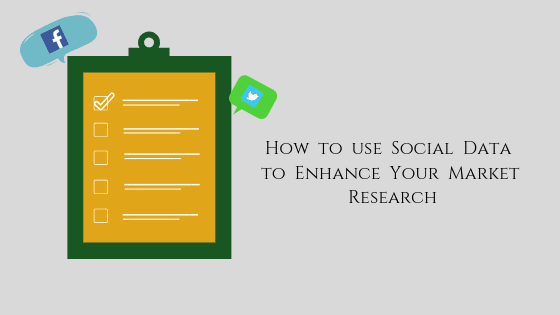How Social Listening Drives Market Research?
Every company indulges in an extensive market research procedure. As they should. Proper market research is key to how successful a business is. This activity helps you understand and plan the most crucial aspects of your business. You may want to know about your campaign effectiveness, competitors, or customer segmentation. Even for this, market research is the way to go. However traditional approaches to market research have their limitations. Most businesses are now shifting to more modern techniques of doing market research. Social listening is one such tool and we are here to explain how social listening drives market research.

Why Social Listening over Traditional Techniques?
When we say traditional techniques of market research the most obvious options come to mind. Options such as surveys, focus groups, interviews et cetera. The disadvantages of all these options are almost the same. They reflect the feelings and opinions of a small sample group. The researcher might not ask the right questions. Sometimes participants may feel shy to voice their true thoughts or say what they truly feel. Sometimes consumers may answer the survey, without even knowing about the product or having formed any opinion of that product or service at that time.
All these factors can lead to a very skewed perception of your business’ performance or success rate.
Real-Time Actionable Insights
Social listening drives market research in a more scientific way. Social listening to social media conversations happens in real-time. So the feedback and insights which come in are in real-time as well. For traditional methods, the data collected for research may become outdated by the time the whole process is wrapped up. While on the other hand, social listening companies have access to current information.
Speed and Convenience
Social listening analyzes the information at a much faster rate than traditional methods of surveying and reporting. This tool also makes the entire process extremely convenient. There is no need for a massive team to run the tool and make sense of the insights. The tool makes most of the work automated.
Accuracy
With social media listening, the responses from the consumers are unprompted. As netizens, we often talk about our experiences with brands on social media without being actively asked. These words truly represent our thoughts and feelings about the product or service. Listening to these makes the data more accurate than the data collected via traditional market research methods.
Affordable
One of the primary reasons why social listening is booming as a technique for market research is that it’s affordable. Owing to the fact that the tool is fast and simple to use, it doesn’t need other inputs such as a large team to operate it. In traditional methods, most of the work is done by individuals. This means a lot has to be invested in setting up the team, training them, and then carrying out the process.
How does Social Listening Drive the Market Research Process?
The most interesting ways social listening can supplement your market research is by:
1. Helping you Know your Target Segment
Your reality might not be the same as your customer’s reality. What you may perceive as an excellent marketing message may backfire. Social listening tools filter data based on sentiment analysis, demographics, influence scores, and a lot more. This allows you to know your audience’s wants and needs. This also helps you make decisions about market segmentation based on the detailed analysis.
2. Setting a Competitive Benchmark
The first thing any business owner wants to know is how they are going as compared to others within the industry. A major chunk of traditional market research reports is dedicated to competitors. With social listening, the whole process becomes even more exciting. In addition to you being able to monitor your brand in real-time, you get to monitor them as well.
3. Harnessing both Quantitative and Qualitative data
Data-driven decision making is the way to go. Checking up the numbers before you invest or implement a change is always the right thing to do. However, numbers alone do not always tell the whole story. Let’s look at an example. Let’s say your brand has been running a marketing campaign across all your social media accounts. You are using a brand hashtag (say #ABC) for the campaigns. While looking at the metrics you see a massive engagement score for your brand’s hashtag #ABC.
Now, simply looking at the numbers you arrive at a conclusion that your campaign is doing really well. But in fact, if you were to look into the qualitative side of it, you would see that most of the engagement your hashtag has been getting is negative. People are not happy with the campaign and they are commenting negatively on your posts.
Social listening helps you put things in perspective as it presents the quantitative and qualitative sides of analytics together.
4. Getting Actionable Feedback in Real-Time
You can gauge your brand’s strengths and weaknesses by monitoring social media conversations in real-time. And since you get an alert immediately every time someone mentions your brand, you can just move into action and manage your online reputation. The most important application is that it helps you prevent negative feedback from turning into a crisis moment well in time.
Artificial intelligence – the force behind tools like social listening is evolving each day. And even at this nascent stage, it is powerful enough to help businesses and world organizations predict trends and make decisions. Hopefully, this article helped you see how social listening drives market research and is the best-suited method in the current age of technology.



